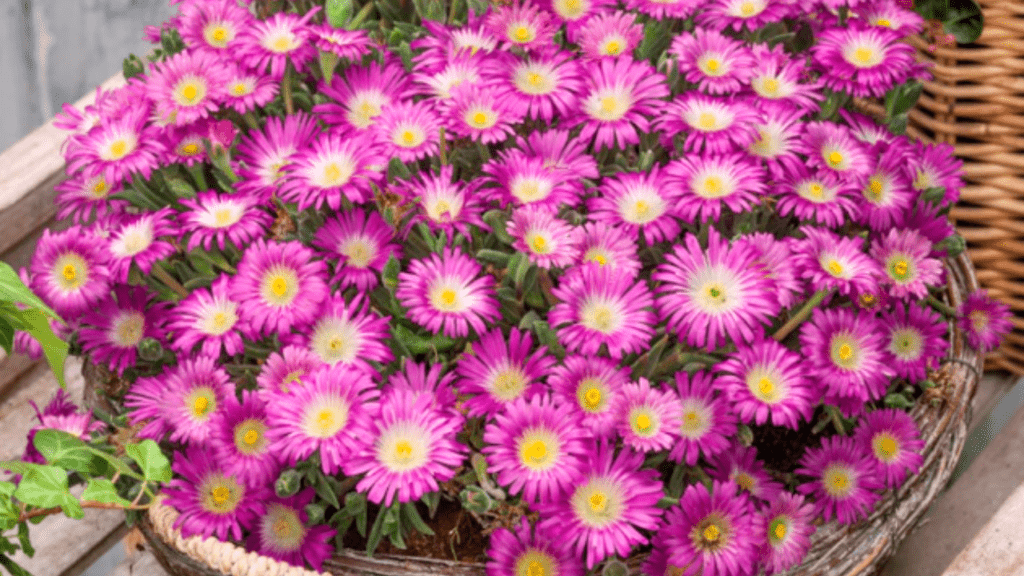
Ice Plant Seeds: A Complete Guide to Growing Stunning Succulents
Ice plant seeds offer a fantastic way to grow a stunning and resilient succulent that adds vibrant colors to any garden or landscape. In this comprehensive guide, we will explore everything you need to know about ice plant seeds, from selecting and planting to nurturing and enjoying these beautiful plants.
Ice plants are a popular choice for gardeners and landscape enthusiasts due to their vibrant and colorful flowers, as well as their ability to thrive in harsh, dry conditions. Ice plant seeds offer an easy and affordable way to grow these stunning succulents in your own garden. With a wide range of colors and varieties available, ice plants can add a pop of color and visual interest to any outdoor space. Whether you are a novice gardener or an experienced horticulturist, growing ice plants from seeds can be a rewarding and enjoyable experience. With the right care and attention, you can enjoy the beauty of these resilient plants for years to come.
Ice plant seeds are a great way to grow stunning and resilient succulents that can add vibrant colors to any garden or landscape. These plants are popular for their colorful flowers and ability to thrive in harsh, dry conditions, making them a great choice for any gardener. When selecting ice plant seeds, it’s important to choose a variety that suits your garden’s climate and soil conditions. Planting ice plant seeds is relatively easy, but it’s important to prepare the soil properly and provide the right amount of water and sunlight for them to grow. With proper care and attention, you can enjoy the beauty of these resilient plants for years to come. Whether you’re a novice gardener or an experienced horticulturist, growing ice plants from seeds can be a rewarding and enjoyable experience.
Table of Contents
ToggleUnderstanding Ice Plants
Ice plants are a popular choice for many gardeners due to their vibrant colors and resilience in harsh, dry conditions. When selecting ice plant seeds, it’s important to choose a variety that suits your garden’s climate and soil conditions to ensure successful growth. These plants can be relatively easy to grow, but it’s crucial to prepare the soil properly and provide the right amount of water and sunlight for them to thrive. With the right care and attention, you can enjoy the beauty of these resilient plants for years to come. Whether you’re a novice gardener or an experienced horticulturist, growing ice plants from seeds can be a rewarding and enjoyable experience. Their ability to thrive in tough conditions makes them a great choice for any garden or landscape.
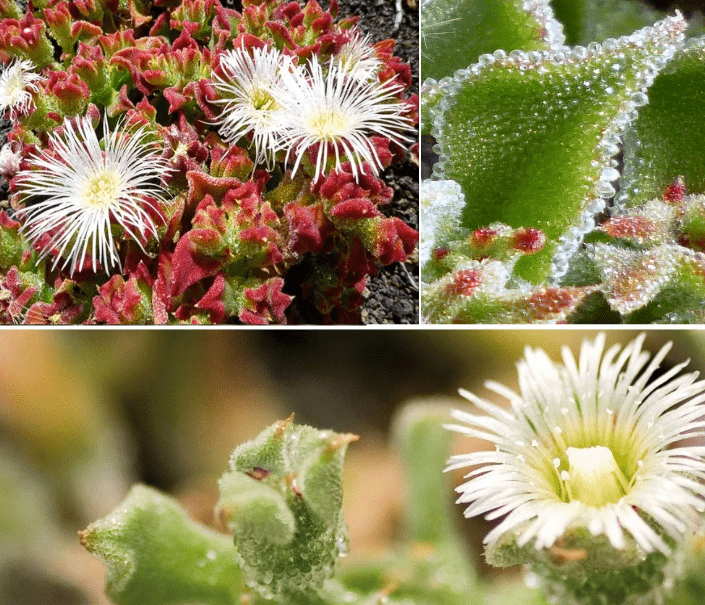
What Are Ice Plants?
Ice plants, also known as delosperma, are low-growing succulent plants that are known for their vibrant and colorful flowers. They are popular for their ability to thrive in harsh, dry conditions, making them a great choice for gardens and landscapes. Ice plants come in a wide range of colors and varieties, adding a pop of color and visual interest to any outdoor space. They are relatively easy to grow from seeds and are resilient, making them a great option for both novice and experienced gardeners. Proper care and attention, including preparing the soil, providing the right amount of water and sunlight, can help ensure that ice plants thrive and bring beauty to your garden for years to come.
Benefits of Growing Ice Plants
There are several benefits to growing ice plants in your garden. These resilient plants are known for their ability to thrive in dry and harsh conditions, making them a low-maintenance and drought-tolerant option for landscaping. Their vibrant and colorful flowers add a pop of color and visual interest to any outdoor space. Ice plants are also relatively easy to grow from seeds, making them a great option for both novice and experienced gardeners. Additionally, these plants are known for attracting pollinators such as bees and butterflies, contributing to the overall health of your garden ecosystem. With proper care and attention, including preparing the soil, providing the right amount of water and sunlight, you can enjoy the beauty of these resilient plants for years to come. Whether you’re a novice gardener or an experienced horticulturist, growing ice plants from seeds can be a rewarding and enjoyable experience.
Selecting Ice Plant Seeds
Types of Ice Plant Seeds
When selecting ice plant seeds, it’s important to consider the specific variety you want to grow. There are different types of ice plant seeds available, each with its own unique characteristics and growth requirements. Some popular types of ice plant seeds include Delosperma cooperi, Delosperma ‘Fire Spinner’, and Delosperma ‘Jewel of Desert’. These varieties offer a range of colors and growth habits, so you can choose the one that best suits your landscaping needs. Additionally, consider purchasing high-quality seeds from a reputable supplier to ensure the best chances of successful germination and growth. With the right selection of ice plant seeds, you can bring vibrant and low-maintenance beauty to your garden.
Where to Buy Ice Plant Seeds
You can buy ice plant seeds from a variety of sources, including local nurseries, garden centers, and online seed suppliers. Local nurseries and garden centers may carry a selection of ice plant seeds, and they can also provide helpful advice on growing and caring for these plants. If you prefer the convenience of online shopping, there are many reputable seed suppliers that offer a wide variety of ice plant seeds for purchase. Be sure to choose a supplier that offers high-quality seeds and has positive customer reviews. Additionally, consider checking for any specific requirements or recommendations for growing ice plants in your climate zone before making a purchase. With the right seeds and proper care, you can create a beautiful and resilient garden with ice plants.
Preparing for Planting
Seed Treatment
Before planting ice plant seeds, it’s important to consider seed treatment. This can include scarification, which involves scratching the seed coat to encourage germination, or soaking the seeds in water to soften the coat. Seed treatment methods can vary depending on the specific needs of the ice plant seeds you have purchased. Additionally, consider the soil and environmental conditions that are best for ice plant growth. Proper preparation and treatment of seeds can greatly improve the chances of successful germination and healthy plant growth. Be sure to follow recommended seed treatment methods to ensure the best results for your ice plant garden.
Soil Preparation
is key to successful gardening, especially when it comes to planting ice plants. Start by choosing a suitable location for your ice plant garden and make sure the soil is well-draining and low in fertility. Ice plants thrive in sandy or gravelly soils, so you may need to amend your soil if it is too heavy or clay-like.
Before planting, it’s important to prepare the soil by loosening it to a depth of about 6-8 inches. Remove any weeds or debris and add organic matter, such as compost or aged manure, to improve soil structure and fertility. Ice plants prefer slightly acidic to neutral soil, so if your soil is too acidic or alkaline, consider adding the appropriate amendments to adjust the pH level.
Once the soil is prepared, you can create planting beds or raised mounds to ensure good drainage for your ice plants. Make sure to space the plants according to their mature size and water them thoroughly after planting. With proper soil preparation, you can create an ideal environment for your ice plants to thrive and flourish.
Planting Ice Plant Seeds
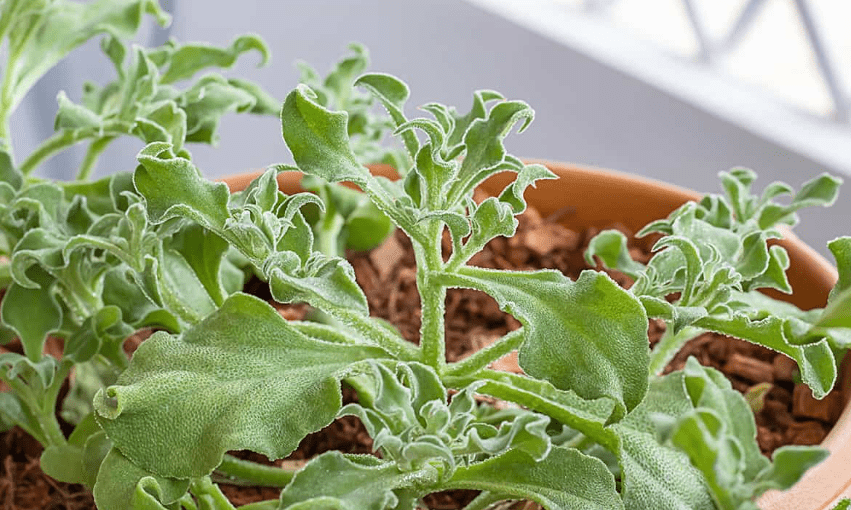
Best Time to Plant
The best time to plant ice plant seeds is in the spring, after the last frost has passed. This will give the seeds the best chance of germinating and growing successfully. Make sure to choose a location with well-draining soil and ample sunlight for the best results. It’s also important to prepare the soil by loosening it, removing weeds or debris, and adding organic matter to improve fertility. With proper soil preparation and planting in the spring, you can create an ideal environment for your ice plant seeds to grow and thrive.
Planting Techniques
Ice plants prefer slightly acidic to neutral soil, so if your soil is too acidic or alkaline, consider adding the appropriate amendments to adjust the pH level. Once the soil is prepared, you can create planting beds or raised mounds to ensure good drainage for your ice plants. Make sure to space the plants according to their mature size and water them thoroughly after planting. With proper soil preparation, you can create an ideal environment for your ice plants to thrive and flourish.
Planting Ice Plant Seeds
The best time to plant ice plant seeds is in the spring, after the last frost has passed. This will give the seeds the best chance of germinating and growing successfully. Choose a location with well-draining soil and ample sunlight for the best results. It’s important to prepare the soil by loosening it, removing weeds or debris, and adding organic matter to improve fertility. With proper soil preparation and planting in the spring, you can create an ideal environment for your ice plant seeds to grow and thrive.
Caring for Ice Plants
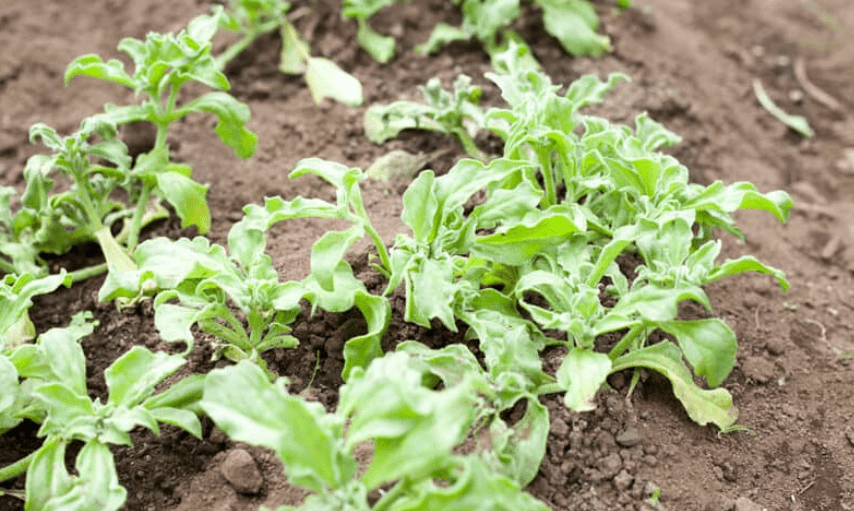
Watering
is an essential part of caring for ice plants. These plants are drought-tolerant, so they don’t require a lot of water. However, it’s important to water them deeply and thoroughly when the soil is dry to the touch. This will help promote healthy root growth and overall plant health. Overwatering can lead to root rot, so it’s important to strike the right balance.
When watering your ice plants, it’s best to water them at the base to avoid wetting the foliage, which can make them more susceptible to diseases. It’s also a good idea to water them in the morning to give the foliage time to dry before the cooler evening temperatures set in.
In general, ice plants do well with deep, infrequent watering rather than frequent shallow watering. This helps encourage deep root growth and drought resistance. Once established, ice plants can go for long periods without water, making them a great choice for low-maintenance landscaping.
By paying attention to the watering needs of your ice plants and providing them with the right amount of water, you can help them thrive and add beauty to your garden or landscape.
Fertilization
is an important aspect of plant care, and it can help promote healthy root growth and overall plant health. Ice plants, in particular, benefit from a balanced fertilizer that is low in nitrogen. Over-fertilizing can lead to excessive foliage growth at the expense of flower production, so it’s important to use a fertilizer specifically formulated for flowering plants. It’s best to apply the fertilizer in the early spring as new growth begins, and then again in the late summer to promote fall blooms. When fertilizing, be sure to follow the instructions on the product label and avoid applying the fertilizer directly onto the foliage to prevent burning. With proper fertilization, you can help your ice plants thrive and produce beautiful, vibrant blooms.
Light and Temperature
are crucial factors to consider when caring for ice plants. These plants thrive in full sunlight and high temperatures, making them excellent choices for gardens in hot, arid climates. They need at least 6 hours of direct sunlight to flourish and produce vibrant, colorful blooms. In terms of temperature, ice plants can tolerate high heat and are also able to withstand cold temperatures, making them adaptable to various climate conditions. It’s important to provide these plants with the right amount of light and to ensure that they are exposed to the appropriate temperature range for optimal growth and blooming. By understanding and meeting their light and temperature needs, you can help your ice plants thrive and add beauty to your garden or landscape.
Pruning and Maintenance
are essential for keeping your ice plants healthy and vibrant. Regular pruning helps to promote new growth and encourages the plant to produce more blooms. It’s best to prune your ice plants in the early spring before new growth begins, removing any dead or damaged stems and shaping the plant to maintain a neat appearance. Additionally, removing spent blooms throughout the growing season can help to prolong the flowering period and encourage the plant to produce more flowers.
In terms of maintenance, it’s important to provide your ice plants with well-draining soil and to water them sparingly, as they are drought-tolerant plants. Overwatering can lead to root rot and other issues, so it’s best to let the soil dry out between waterings. Applying a layer of mulch around the base of the plant can help to retain moisture and suppress weed growth.
By following proper pruning and maintenance practices, you can help your ice plants to thrive and continue to produce beautiful, vibrant blooms in your garden or landscape.
Propagation Methods
Propagating from Cuttings
is a common and effective way to propagate ice plants. To propagate from cuttings, start by selecting a healthy stem from the parent plant. Using a sharp, sterile pair of scissors or pruning shears, snip off a 3-4 inch section of the stem, making sure to include several sets of leaves. Remove the lower set of leaves from the cutting, leaving a clean stem at the base.
Next, prepare a small pot filled with well-draining soil. Dip the cut end of the stem into a rooting hormone powder to encourage root development, then gently insert the cutting into the soil, making sure that at least one set of leaves is above the soil line. Water the cutting lightly and place the pot in a warm, bright location, but out of direct sunlight.
Keep the soil consistently moist, but not waterlogged, and within a few weeks, you should start to see new roots forming on the cutting. Once the roots are well-established, you can transplant the new plant into a larger container or directly into the garden.
Overall, propagating ice plants from cuttings is a simple and effective method for creating new plants and expanding your garden. By following the proper techniques and providing the right care, you can successfully propagate ice plants and enjoy their vibrant blooms in multiple areas of your garden or landscape.
Division
is a common method for propagating many types of plants, including ice plants. To divide an ice plant, carefully dig up the entire plant and gently separate the roots and stems into smaller sections. Each section should have its own set of roots and shoots. Replant the divided sections in well-draining soil, and water them thoroughly to help them establish new root systems. Keep the newly divided plants well-watered and in a shaded area until they start to show new growth. This method allows you to create multiple new plants from a single existing one, and can help you to fill in empty spaces in your garden or share your ice plants with friends and family. Dividing ice plants is a great way to expand your garden and create a beautiful display of colorful blooms.
Common Issues and Solutions
One common issue when propagating ice plants from cuttings is root rot. This can occur if the plants are overwatered or if the soil doesn’t drain well. To prevent root rot, make sure to plant the cuttings in well-draining soil and avoid overwatering them. Another common issue is wilting or yellowing of the leaves, which can be a sign of nutrient deficiencies. To address this, consider adding a balanced fertilizer to the soil or providing the plants with a nutrient-rich compost. Additionally, pests such as aphids or mealybugs may also pose a threat to the newly propagated plants. Keep an eye out for any signs of pests and treat them with insecticidal soap or neem oil if necessary. By being aware of these common issues and taking the necessary precautions, you can successfully propagate ice plants from cuttings and enjoy a beautiful and thriving garden.
Benefits and Uses of Ice Plants
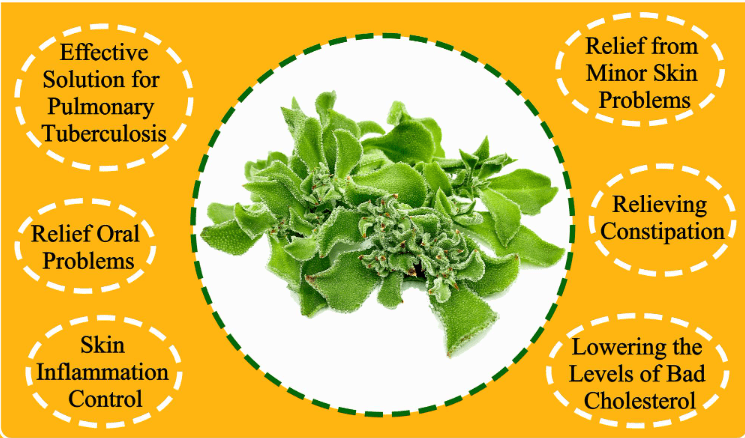
Landscaping
Ice plants are a great addition to any landscaping project. They are low-maintenance and drought-resistant, making them perfect for areas with dry and sandy soil. These plants also produce vibrant, colorful blooms that can add a pop of color to your garden or yard. Additionally, ice plants are great for erosion control due to their spreading nature and ability to cover large areas of ground. They can also attract pollinators such as bees and butterflies, adding to the biodiversity of your outdoor space. Whether you are looking to create a beautiful display of blooms, prevent erosion, or attract pollinators, ice plants are a versatile and beneficial option for landscaping.
Indoor Growing
If you’re interested in growing ice plants indoors, you’ll need to create the right environment for them to thrive. Ice plants require well-draining soil and bright, indirect sunlight to grow successfully indoors. You can use a well-draining potting mix and place your plant in a sunny spot near a window. Be sure to water your ice plant sparingly, as overwatering can cause the roots to rot. Additionally, pests such as aphids or mealybugs may also pose a threat to the newly propagated plants. Keep an eye out for any signs of pests and treat them with insecticidal soap or neem oil if necessary. By being aware of these common issues and taking the necessary precautions, you can successfully propagate ice plants from cuttings and enjoy a beautiful and thriving garden.
Harvesting and Enjoying Ice Plants
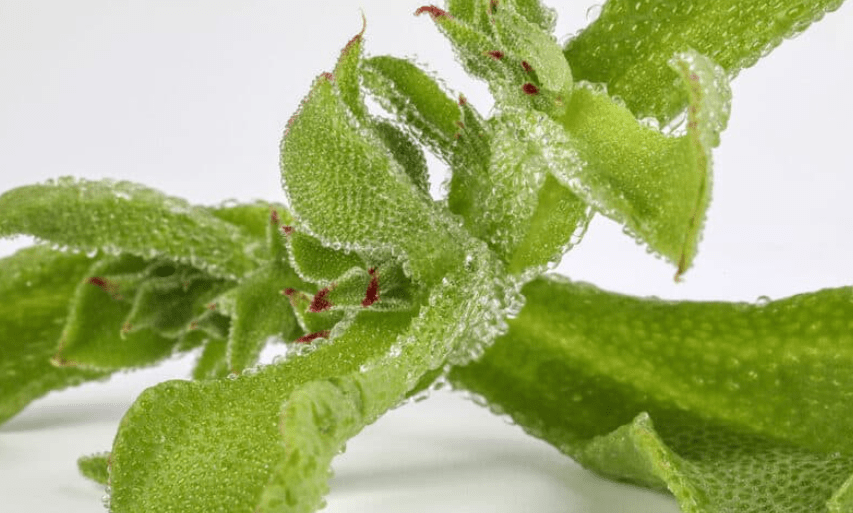
Ice plants can be a beautiful addition to your garden, and they have many benefits. They can help prevent erosion and add a vibrant display of blooms to your outdoor space. They can also attract pollinators such as bees and butterflies, adding to the biodiversity of your garden. If you’re interested in growing ice plants indoors, make sure to provide them with well-draining soil and bright, indirect sunlight. Water them sparingly to avoid rotting roots, and keep an eye out for pests such as aphids or mealybugs. By taking these precautions, you can successfully propagate ice plants from cuttings and enjoy a thriving garden. Whether you’re growing them indoors or outdoors, ice plants are a versatile and beneficial option for landscaping.
In conclusion, growing ice plant succulents from seeds can be a rewarding and fulfilling experience. By following the steps outlined in this guide, you can create a stunning and thriving succulent garden that will bring beauty and joy to your home. Remember to provide the right growing conditions, proper care and maintenance, and you will be able to enjoy the beauty of your ice plant succulents for years to come. Happy gardening!
Frequently asked questions And Answer
Ice plant seeds are the seeds of a succulent plant known as ice plant, or Delosperma. These seeds can be planted to grow beautiful, low-maintenance succulents with colorful, daisy-like flowers.
To plant ice plant seeds, first, prepare a well-draining soil mix in a container or directly in the ground. Sprinkle the seeds on top of the soil and lightly press them into the soil. Water the seeds gently and keep the soil moist until the seeds germinate
Ice plant seeds thrive in full sun and well-draining soil. They are drought-tolerant and prefer dry conditions, so be careful not to overwater them. They can tolerate a range of temperatures and are suitable for growing in containers or in the ground.
Ice plant seeds typically germinate within 7-21 days, depending on the growing conditions and the freshness of the seeds.
Once the ice plant seedlings have germinated, continue to water them sparingly, allowing the soil to dry out between waterings. Prune the plants to encourage bushy growth and deadhead the flowers to promote continuous blooming.
Yes, ice plant seeds can be grown indoors in containers as long as they receive plenty of sunlight. Place the containers near a sunny window and provide well-draining soil for the best results.
Yes, ice plant seeds are relatively easy to grow, especially for those new to gardening. They require minimal care and can thrive in a variety of growing conditions.
Ice plant seeds can be purchased from garden centers, nurseries, or online seed retailers. Look for reputable sources to ensure the quality and viability of the seeds.
